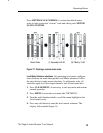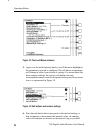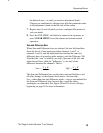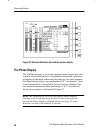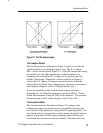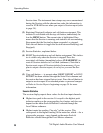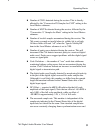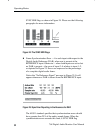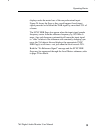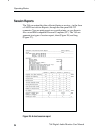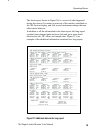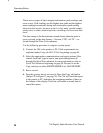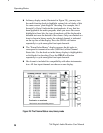
Operating Basics
764 Digital Audio Monitor User Manual
31
H Number of CLIPs detected during the session. This is directly
affected by the “Consecutive FS Samples for CLIP” setting in the
Level Meters submenu.
H Number of MUTEs detected during the session. Affected by the
“Consecutive ‘0’ Samples for Mute” setting in the Level Meters
submenu.
H Number of invalid samples encountered during the session. The
764 counts a sample as invalid when its validity bit is set high.
All these fields will read “off” when the “Ignore Validity Bit”
item in the Level Meters submenu is set to YES.
H Number of parity errors detected during the session. This will
increment if the 764 detects incorrect parity in a received digital
audio word. Parity errors suggest problems with the digital signal
source or signal path.
H Code Violations — the number of “raw” serial data subframes
containing biphase coding errors that are encountered during the
session. Code Violations indicate an incorrect or unreliable serial
digital signal or transmission path.
H The digital audio word length, detected by monitoring bit activity
in the part of the digital signal reserved for audio sample data.
Although it is not likely, this number can differ from the sample
length information indicated in the Channel Status bits of the
digital input signal.
H DC Offset — reported in dBFS (dB relative the the full scale
amplitude of the input signal). Note that an offset of –60 dBFS is
only 0.001 of the full scale amplitude, while an offset of
–90 dBFS is approximately 3.16 10
–5
of full scale.
H The measured sample rate. This number is independent of the
sample rate indicated in the Channel Status bits of the digital
input data, but should be the same. Non-standard sample rates
can cause constantly changing frame synchronization errors and



